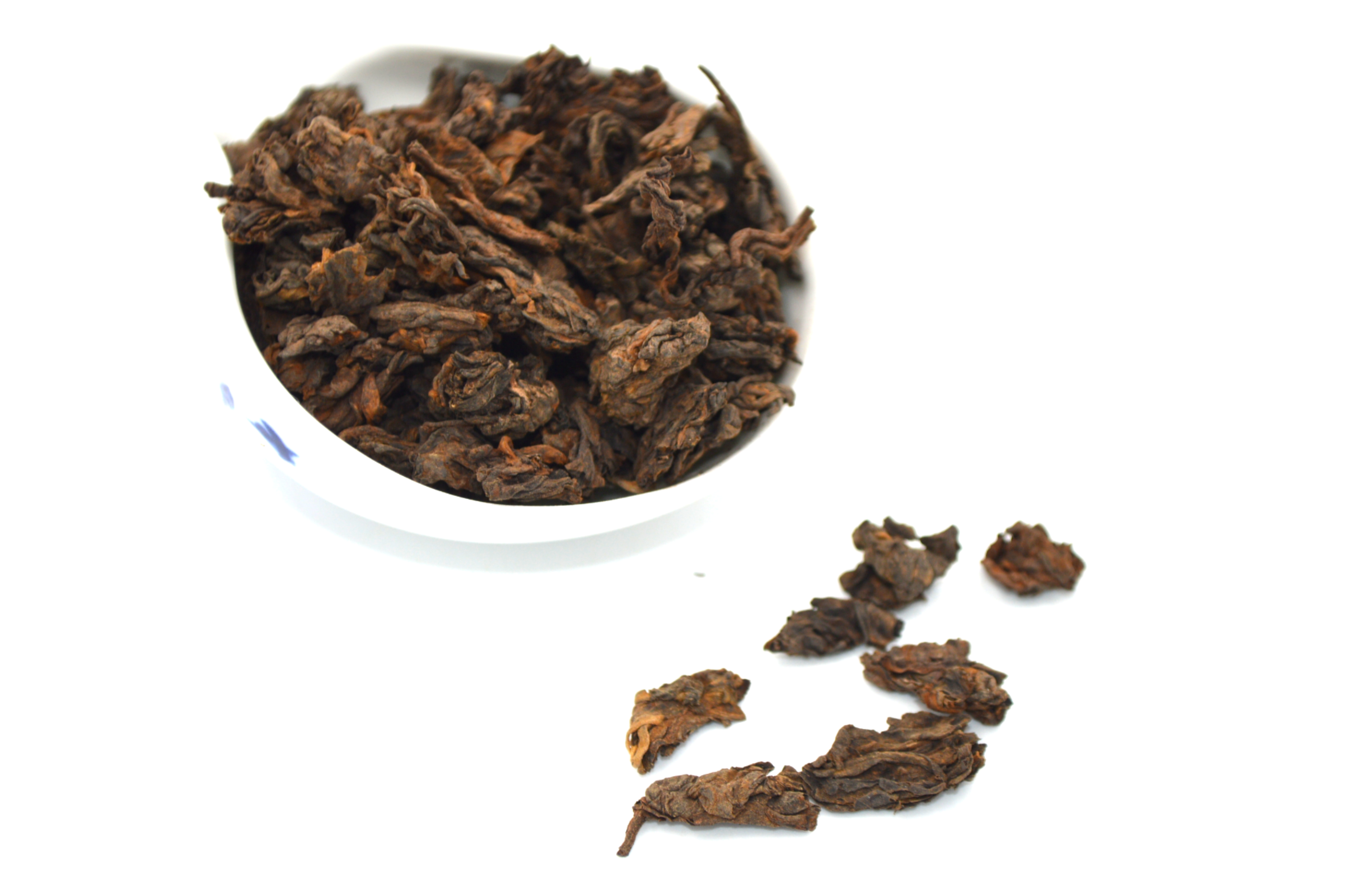Description
- dry tea is lump shape with suitable tightness, lustrous yellowish and reddish dark brown color
- reddish brown tea soup, clear and bright
- aged and mellow fragrances
- aged and sweet, mellow and smooth flavor with a sweet aftertaste
- wet tea is dark reddish brown
“Old tea lump“ 老茶头 [lǎo chá tóu] refers to the Pu’er tea chunk which is hard to lossen because of the temperature, humidity and stirring during a pile fermentation. An outer lump layer has been completely fermented, while its core is not. Tea lump refers to the tea that is caked when Pu’er tea is fermented in pile. Compared with strip tea, the tea lump with normal fermentation degree has more abundant contents, thicker tea soup and more brews. However, most of the tea lumps will not be scattered until the end of brewing, and still stick together. Pu’er Shu ripe tea is artificially watered and fermented in piles. During this fermentation process, the middle of a pile of tea will heat up, and then the tea will be fermented into Shu tea through its own enzymes. In this process, every time after a period of time, workers have to manually turn over the pile of tea to avoid the high temperature inside and scorch the tea. During the fermentation process, after repeated turning, the tea leaves will secrete some pectin. Because the pectin is relatively viscous, some tea leaves will stick together and become lumps. After the fermentation of tea leaves, people will pick out the lumps of tea leaves, untie them with hands, and then put them back into the pile of tea leaves. Some of them are too sticky. In order not to break the tea leaves, put them in another pile to become “lumps of tea”, so they are also called “old tea lumps”.
It gives a unique taste, a mellow fragrance of fermented tea and a freshness of raw tea. In subsequent brews, a fresh and sweet taste of raw tea shows more, which is far better than that of assorted raw and processed Pu’er teas or a flavored liquid of both. Old tea lump is endurable, and its tea soup is dark red like wine, smooth, fragrant and sweet. Brewed leaves are reddish-brown, some with a dark green center due to an incomplete fermentation within a lump.

























